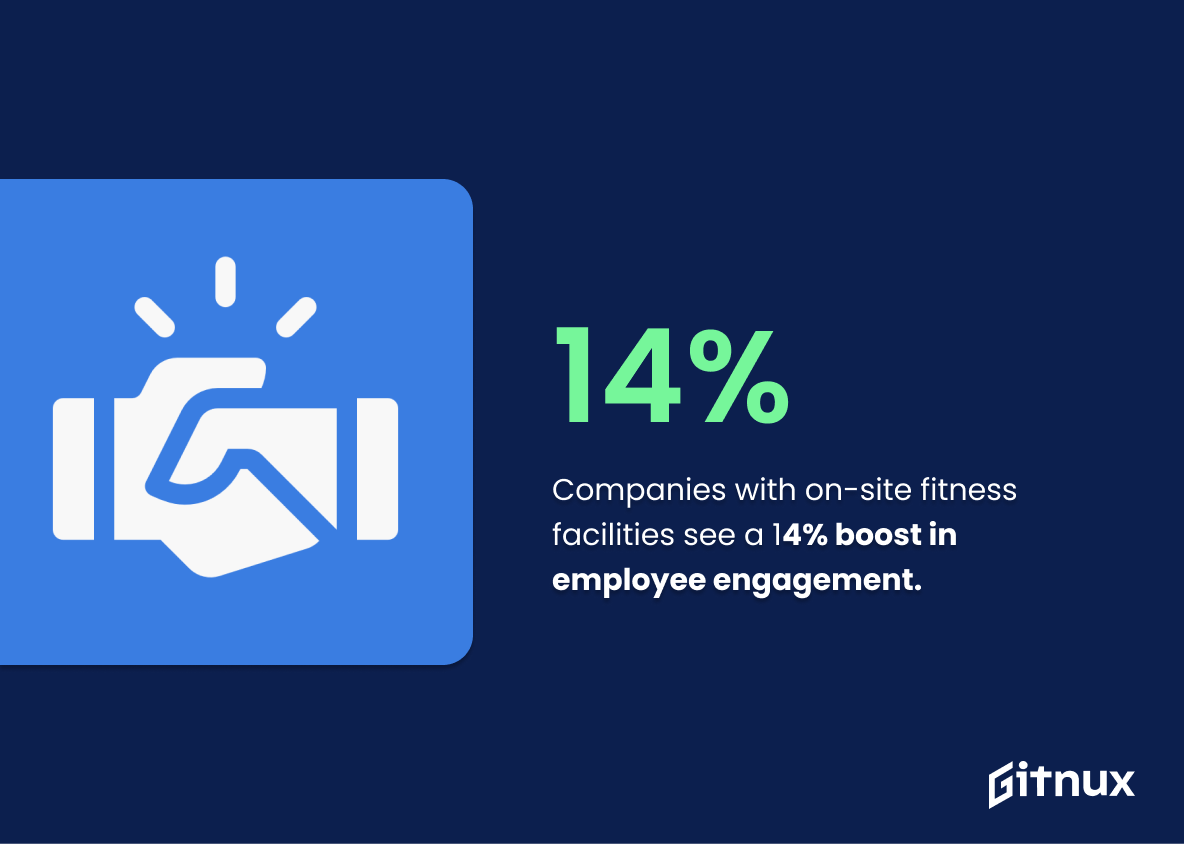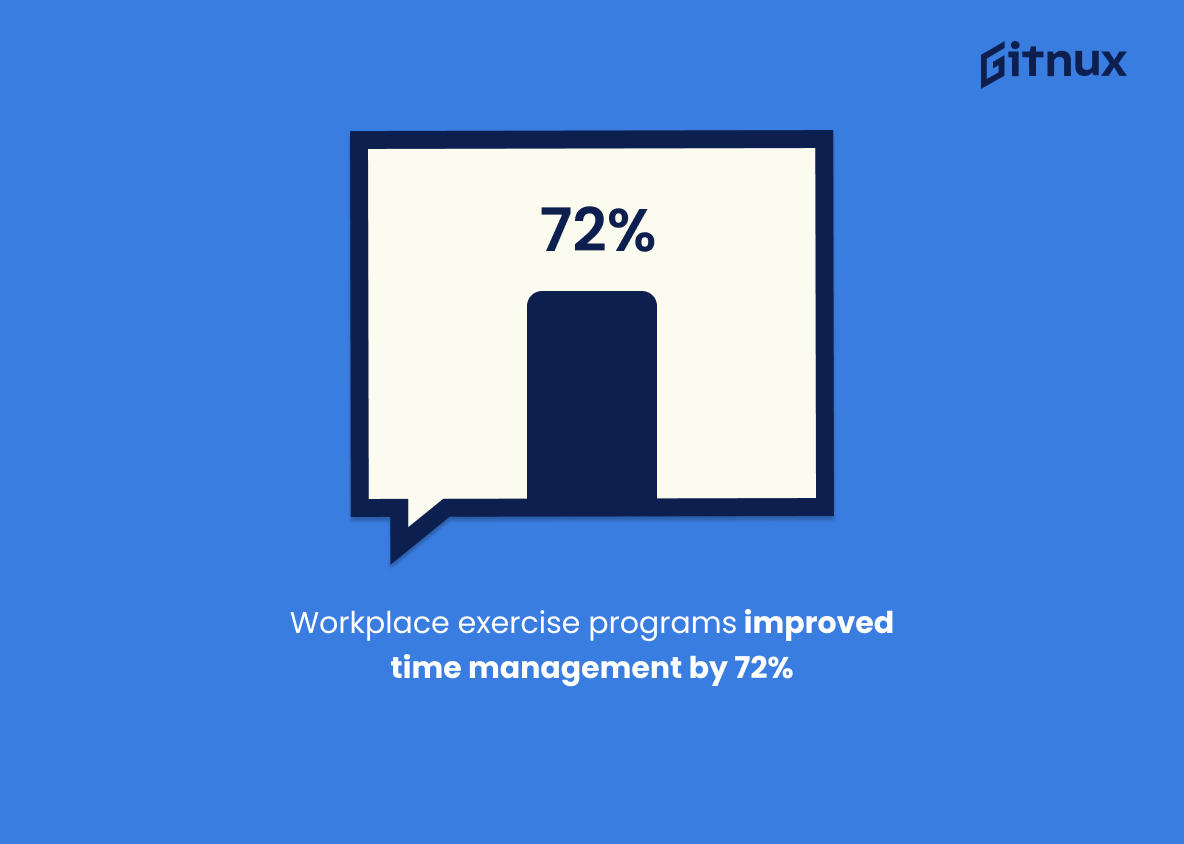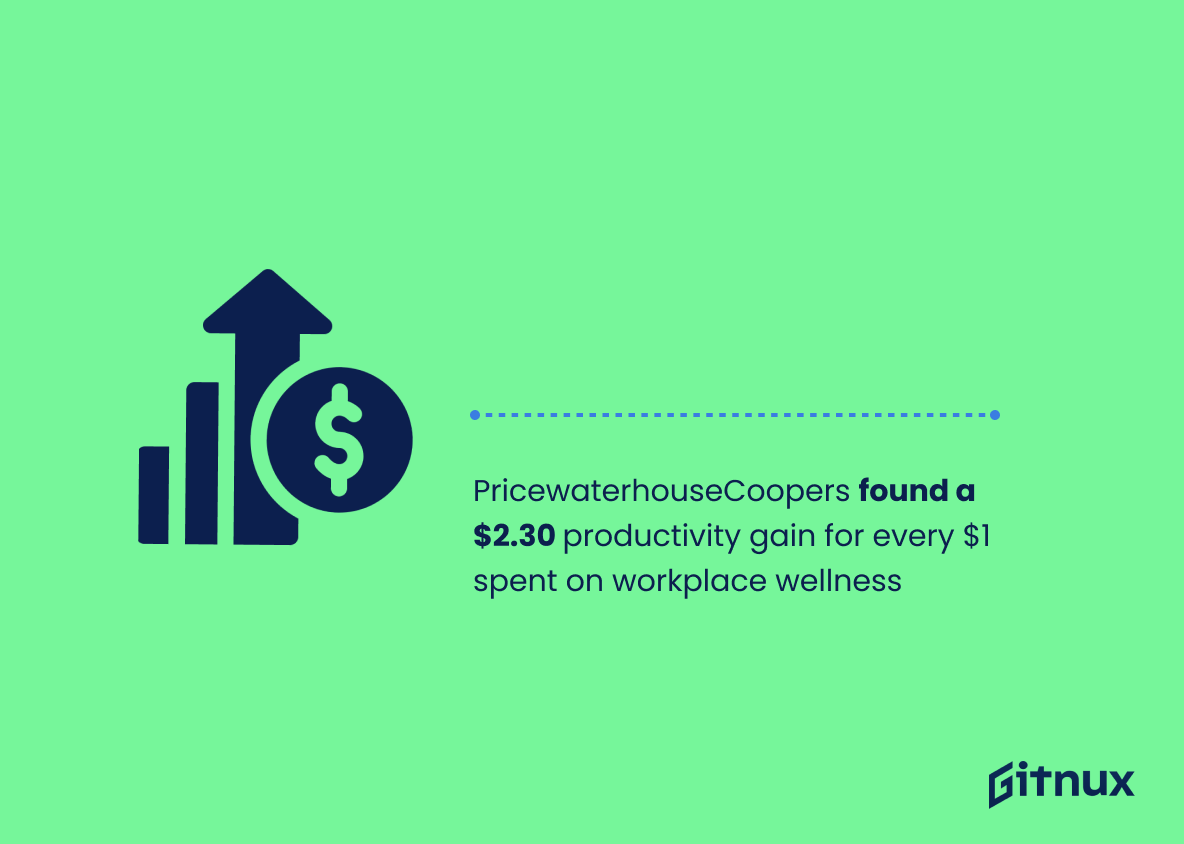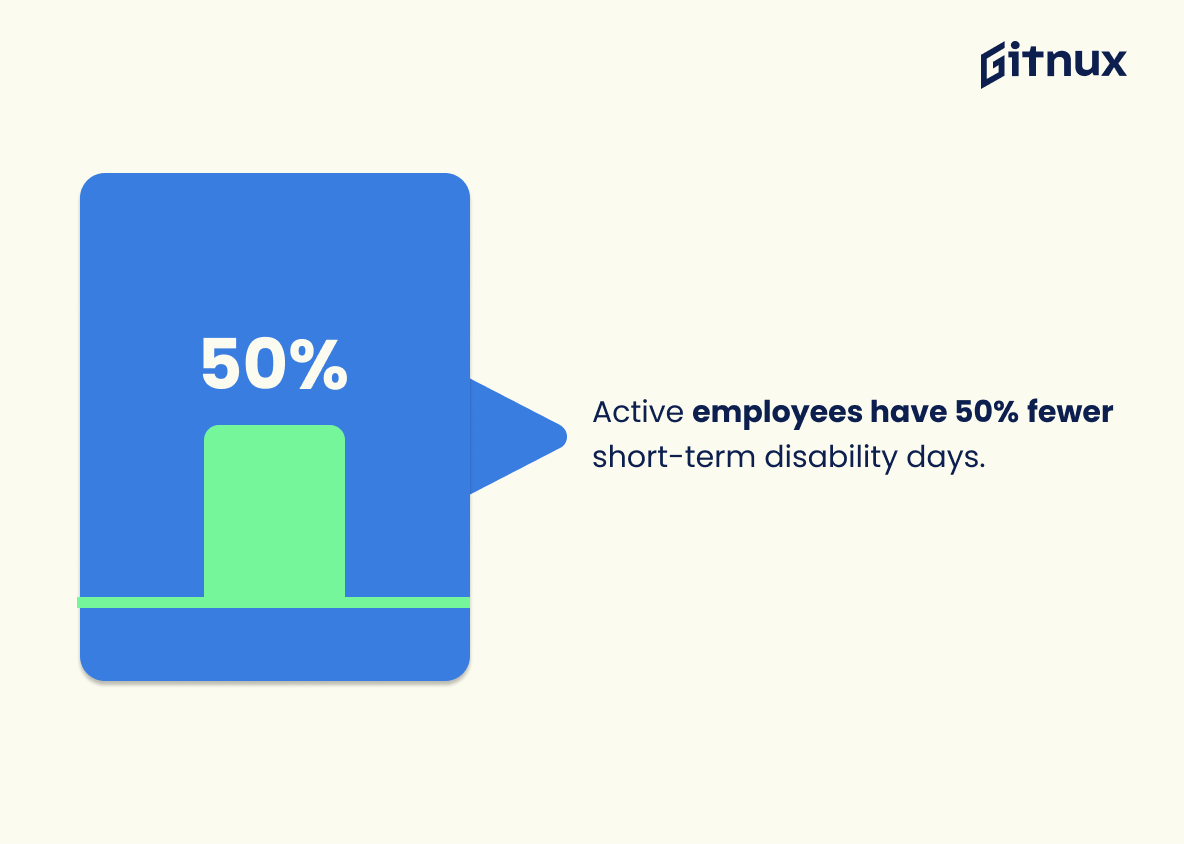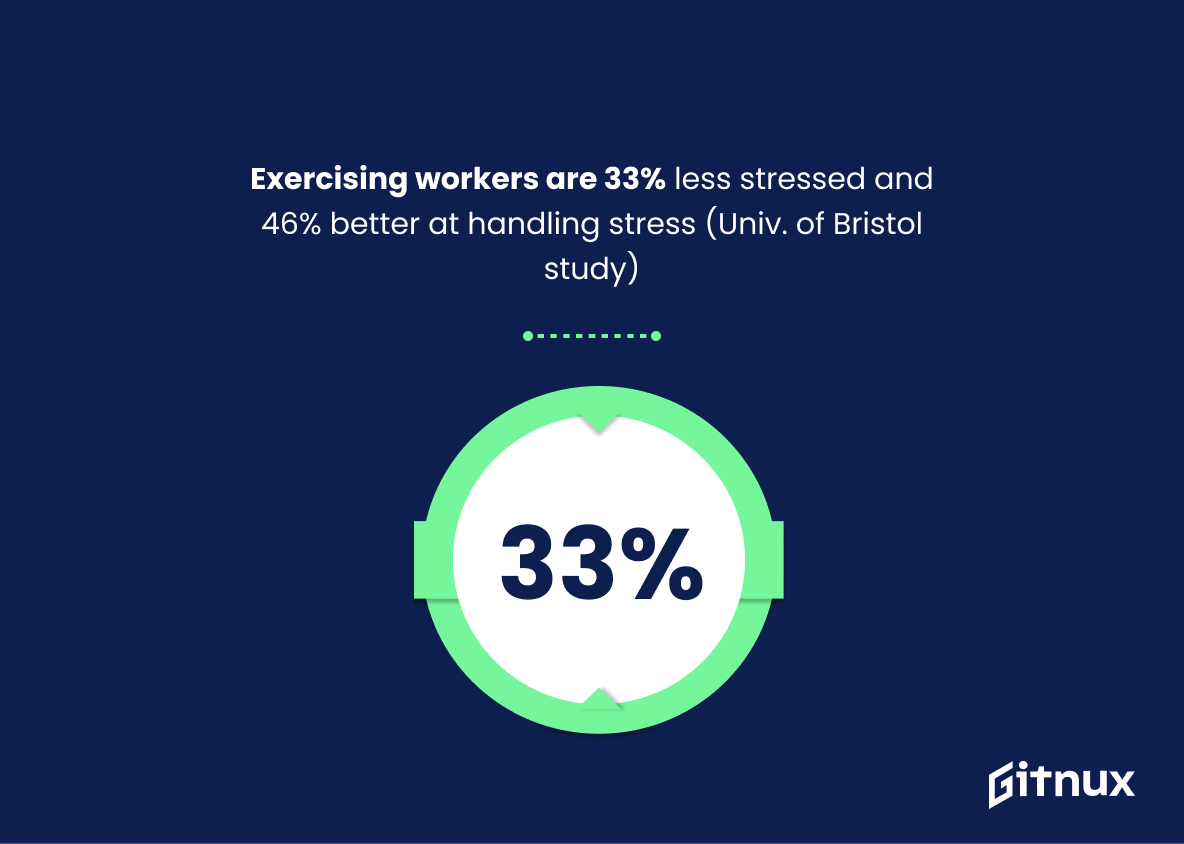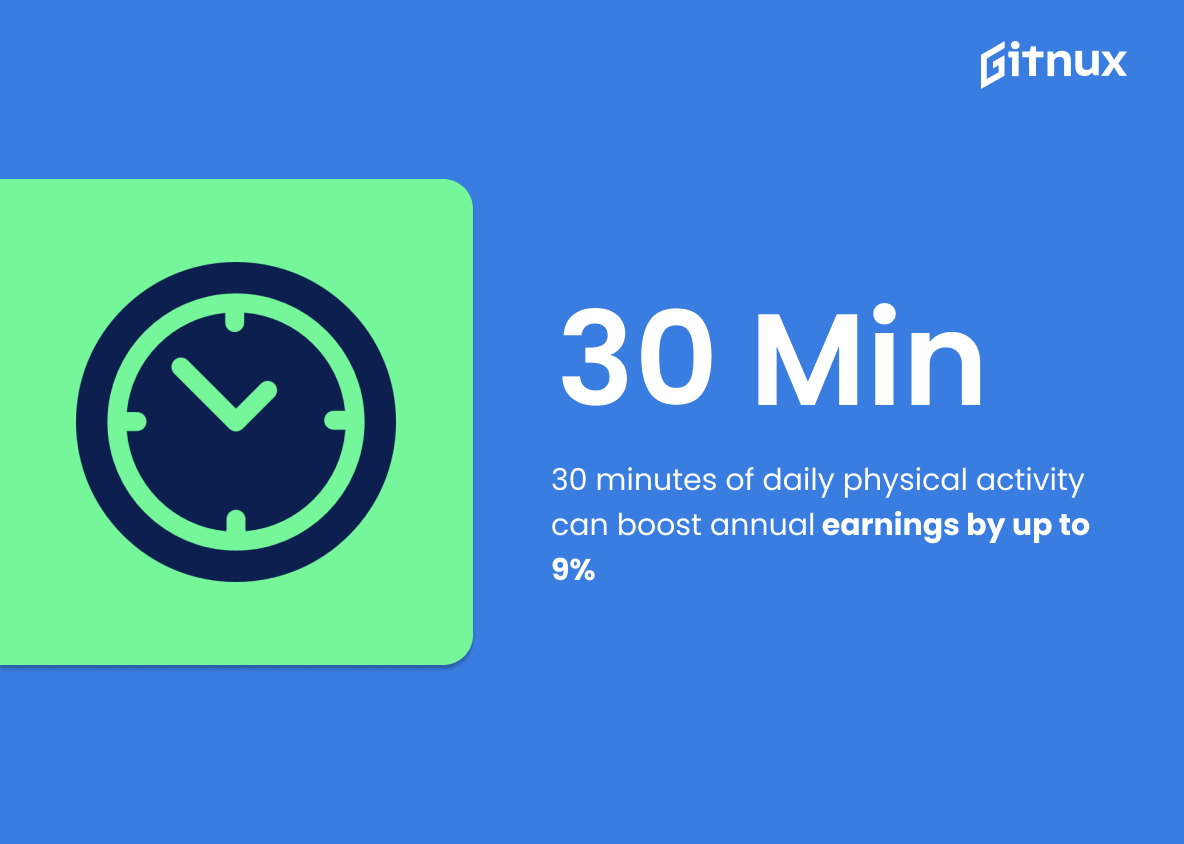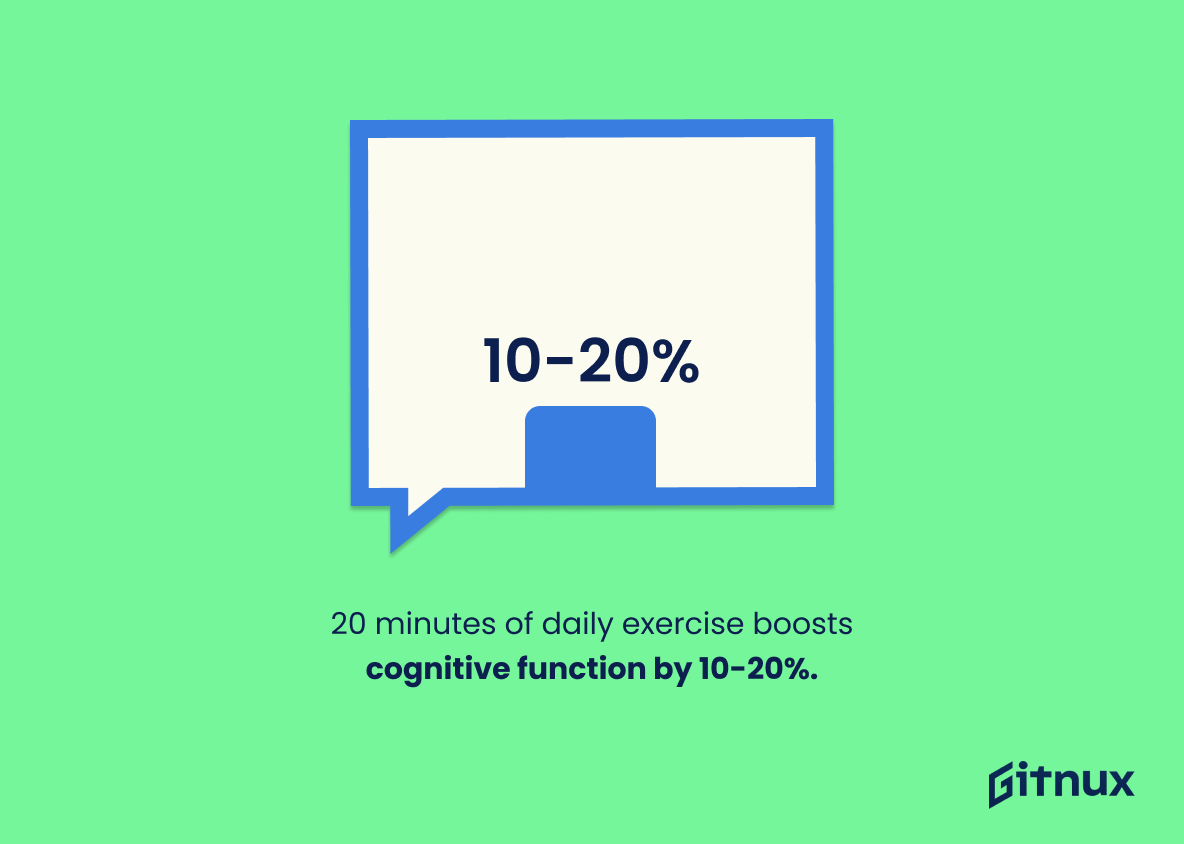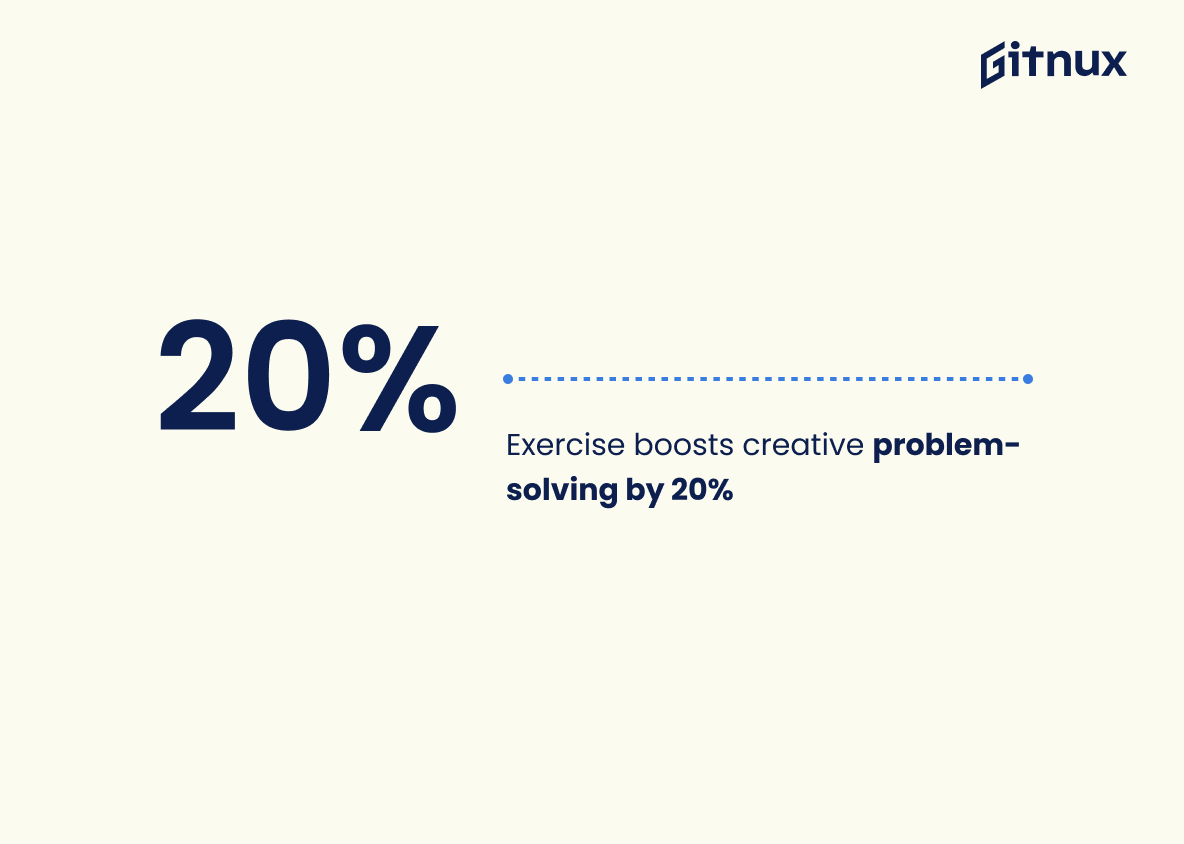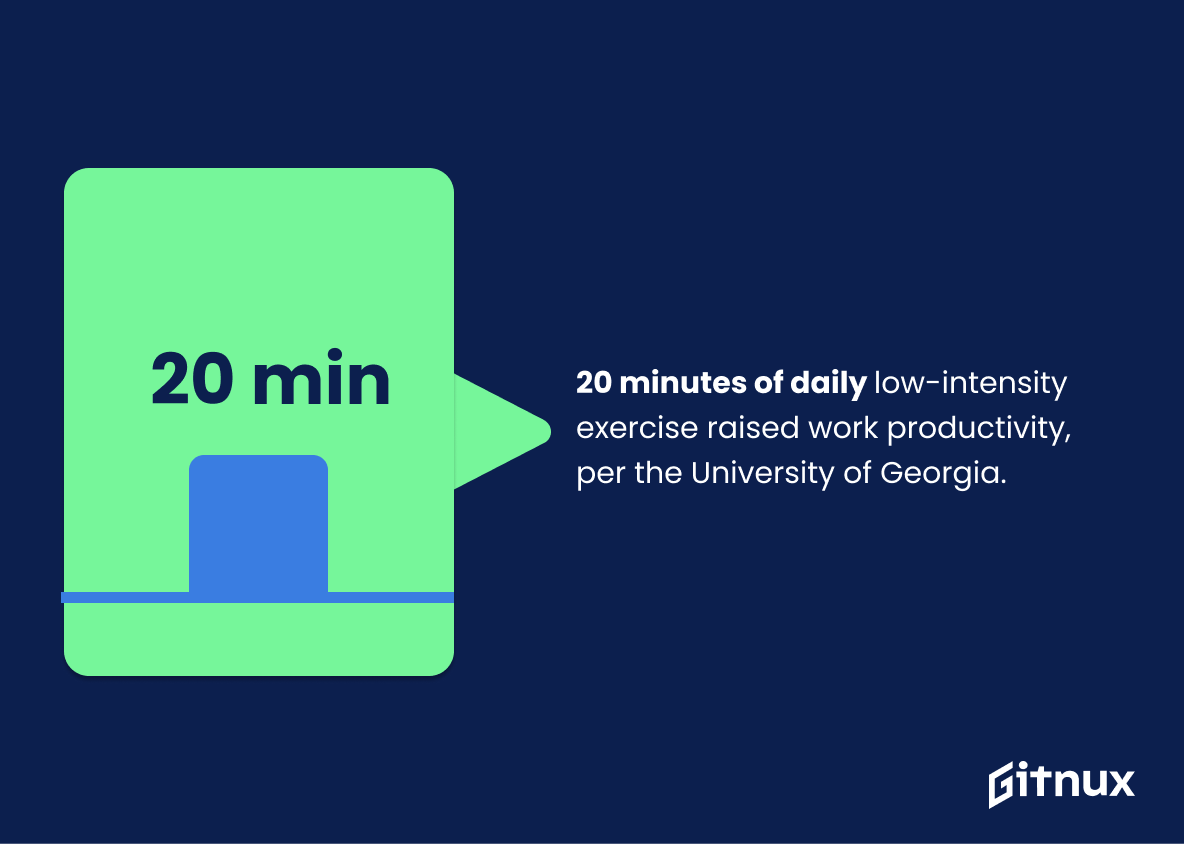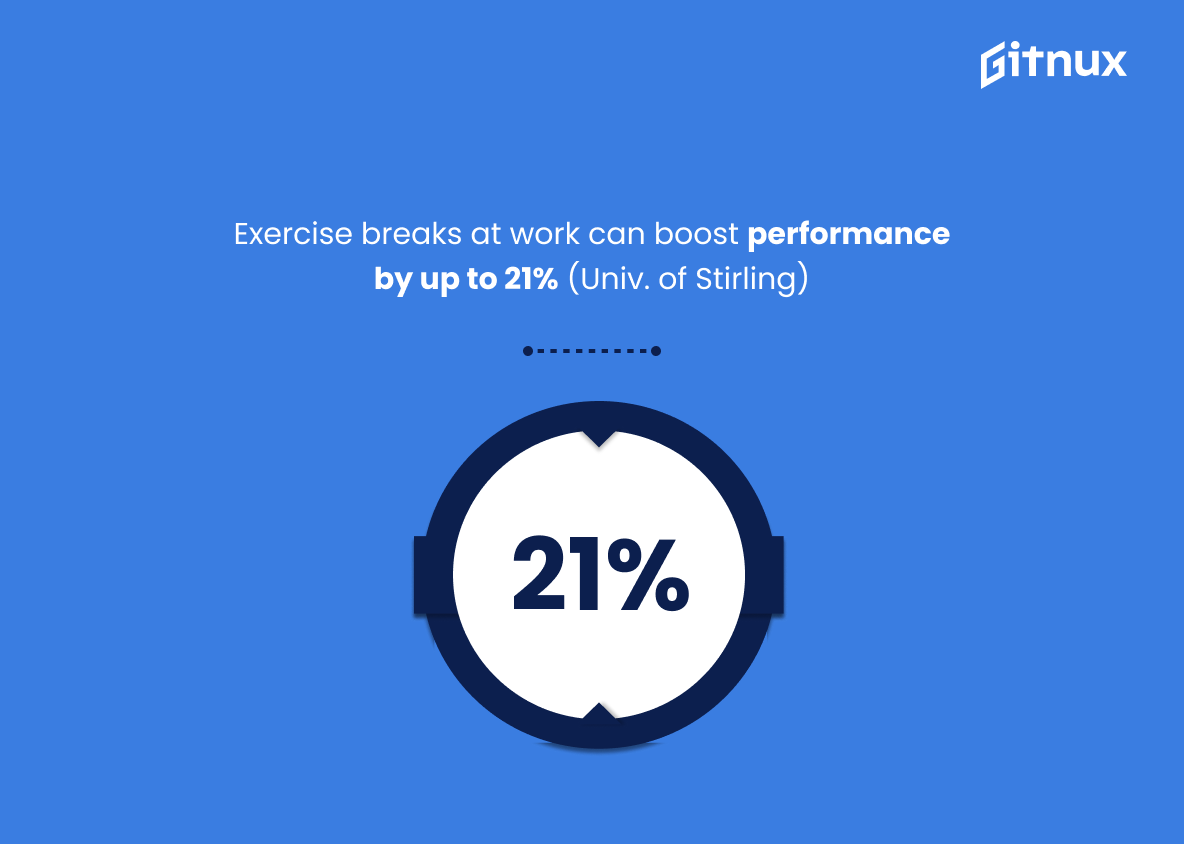Exercise and work productivity are closely linked, with numerous studies showing that employees who exercise regularly experience improved performance at work. From increased motivation to better time management skills, the benefits of regular physical activity for workplace productivity are undeniable. In this blog post, we will explore 20 statistics on how exercise can improve employee engagement and overall job performance.
We’ll look at research from universities such as Otago in New Zealand, Norwegian University of Science and Technology, University of Alabama at Birmingham, American College of Sports Medicine and more to uncover the impact that exercising has on workers’ output levels. So let’s dive into these findings.
Exercise And Work Productivity Statistics Overview
Companies that offer on-site fitness facilities report a 14% increase in employee engagement, according to a study by the International Journal of Workplace Health Management.
This statistic is a powerful testament to the positive impact that exercise can have on employee engagement. It shows that providing on-site fitness facilities can be an effective way to boost morale and productivity in the workplace. This is an important point to consider when discussing the benefits of exercise and work productivity.
In a study by the International Journal of Environmental Research and Public Health, employees who participated in workplace exercise programs reported a 72% improvement in time management and workload completion.
This statistic is a powerful testament to the positive impact that exercise can have on workplace productivity. It shows that by taking the time to exercise, employees can significantly improve their ability to manage their time and complete their workloads. This is an invaluable insight for anyone looking to maximize their productivity and efficiency in the workplace.
According to PricewaterhouseCoopers, for every dollar spent on workplace wellness (including exercise), there is a US$2.30 return in productivity gains.
This statistic is a powerful testament to the positive impact that exercise can have on workplace productivity. It demonstrates that investing in workplace wellness can be a sound financial decision, as it can lead to a return of more than double the initial investment. This is an important point to consider when discussing the relationship between exercise and work productivity.
A study published in the International Journal of Occupational Medicine and Environmental Health found that physically active employees take 50% fewer short-term disability days than inactive employees.
This statistic is a powerful testament to the positive impact that exercise can have on work productivity. It shows that employees who are physically active take significantly fewer short-term disability days than those who are inactive, indicating that exercise can help to reduce the amount of time taken off work due to illness or injury. This is an important statistic to consider when discussing the benefits of exercise and its impact on work productivity.
Workers who exercise are 33% less stressed and 46% better at dealing with stress, according to a study by the University of Bristol.
This statistic is a powerful testament to the positive effects of exercise on stress levels and stress management. It shows that regular exercise can be an effective way to reduce stress and improve one’s ability to cope with it. This is an important point to make in a blog post about exercise and work productivity statistics, as it demonstrates the potential for exercise to improve productivity by reducing stress.
A study in the Journal of Labor Research found that engaging in at least 30 minutes of physical activity per day can increase annual earnings by up to 9%.
This statistic is a powerful reminder of the potential financial benefits of engaging in physical activity. It highlights the fact that taking the time to exercise can have a positive impact on one’s earning potential, making it a worthwhile investment of time and energy.
A study published in The Lancet found that 20 minutes of exercise per day increased cognitive function by 10-20%.
This statistic is a powerful reminder of the positive impact that exercise can have on cognitive function. It highlights the potential for increased productivity that can be achieved through regular exercise, and serves as a reminder of the importance of taking time out of our day to stay active.
Employees who exercise report a 20% increase in creative problem-solving abilities, according to a study published in the Journal of Exercise Physiology.
This statistic is a powerful testament to the positive effects of exercise on work productivity. It suggests that regular exercise can not only improve physical health, but also mental acuity, allowing employees to think more creatively and solve problems more effectively. This is an invaluable asset in the workplace, and one that should not be overlooked.
A study conducted by the University of Georgia found that employees who fit in just 20 minutes of low-intensity exercise per day demonstrated higher work productivity levels.
This statistic is a powerful testament to the positive impact that exercise can have on work productivity. It shows that even a small amount of exercise can have a significant effect on an employee’s ability to perform their job. This is an important finding that should be taken into consideration when discussing the relationship between exercise and work productivity.
A study by the University of Stirling found that exercise breaks during the workday can bolster performance by up to 21%.
This statistic is a powerful testament to the positive impact that exercise breaks can have on work performance. It demonstrates that taking a few minutes out of the day to get some physical activity can have a significant and measurable effect on productivity. This is an important statistic to consider when discussing the benefits of exercise and work productivity, as it provides concrete evidence of the positive effects of exercise on productivity.
Conclusion
The evidence is clear: regular exercise can have a significant positive impact on work productivity. Studies from universities around the world show that employees who engage in physical activity are more productive, better able to manage their time and workloads, less stressed and burned out, and take fewer sick days than those who do not exercise regularly.
Additionally, companies that offer workplace fitness programs report higher employee engagement levels as well as cost savings due to reduced medical expenses. Exercise breaks during the workday also bolster performance by up to 21%. All of this data points towards one conclusion – investing in workplace wellness initiatives such as providing access to fitness facilities or encouraging employees to take short exercise breaks throughout the day will result in improved job satisfaction and increased productivity for both employers and employees alike.
References
0. – https://www.stir.ac.uk
1. – https://www.bristol.ac.uk
2. – https://www.emerald.com
3. – https://www.thelancet.com
4. – https://www.mdpi.com
5. – https://www.uab.edu
6. – https://www.content.sciendo.com
7. – https://www.link.springer.com
8. – https://www.otago.ac.nz
9. – https://www.asep.org
10. – https://www.uga.edu
11. – https://www.pwc.com
